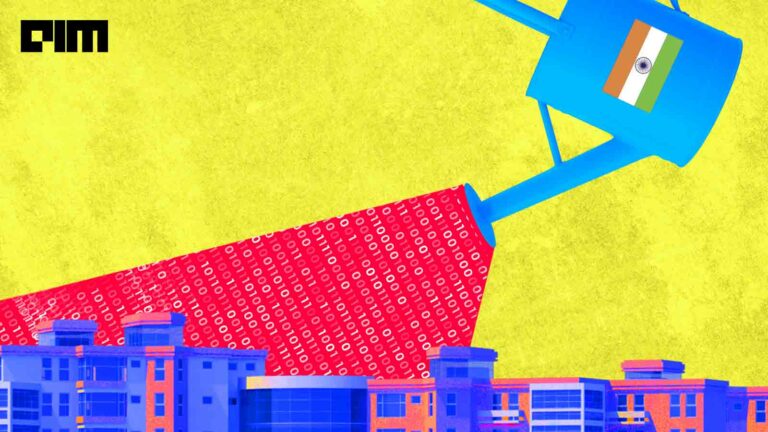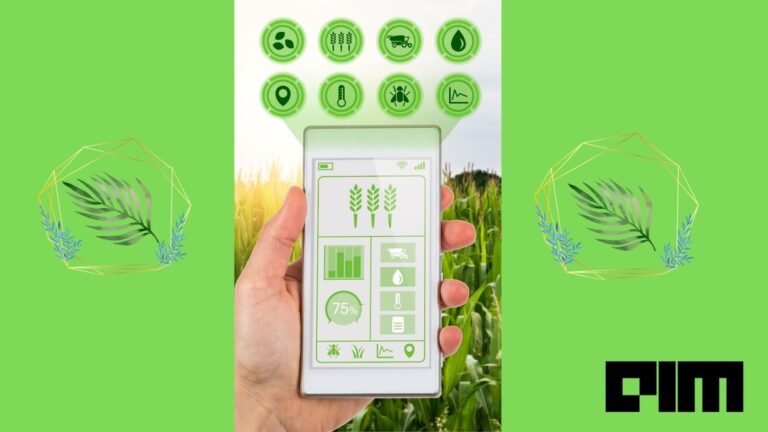Launched in 2015, Ninjacart has now transitioned into one of the largest B2B fresh produce supply chains in India.
Driven by the vision to ‘change the way India consumes food’, Ninjacart has expanded its footprint to 11 major cities across India. Analytics India Magazine caught up with Thirukumaran Nagarajan, co-founder and CEO of Ninjacart, to delve deep into the mechanism powering the company’s operations.
Excerpts:
AIM: Tell us about Ninjacart’s services
Thirukumaran Nagarajan: When we started, we realised that the marketplace for online grocery was in demand, but the supply side of the farmers and retailers end was fragmented to accommodate that demand. Farmers were not getting fair prices as they often used to sell harvested produce to a middleman at a low cost. Retailers, on the other hand, had to compromise with the quality of fresh produce, which was affecting the end consumers.
We have successfully eliminated the intermediaries in the food supply chain, backing it with robust technology and analytics.
Ninjacart’s infrastructure has dramatically shortened the time taken for produce to travel from farm to store, improving farmers’ earnings and living standards. What differentiates Ninjacart is our just-in-time logistics system, with speed and efficiency at the core of all processes.
We have generously invested in technology and particularly in the data science department. Data is used to figure out the logistics of delivery so that drivers do not make unnecessary trips and are always around when needed for deliveries. Retailers enjoy the convenience of receiving fresh produce delivered at their doorstep along with online inventory with secure payment.
Farmers associated with Ninjacart get insights into the demand and supply of produce that align with the market needs. Handling and transporting tonnes of fresh produce is possible because of the in-house ERP (Enterprise Resource Planning) and real-time tracking mechanism.
We have recently launched FoodPrint to keep a tab on fresh produce at every level of the supply chain till it reaches the retailers. The imposition of traceability infrastructure has widened our scope to adapt residue-free farming methods.
AIM: What are the innovative ways in which you use technologies such as AI, IoT, and Analytics?
Nagarajan: Technologies such as artificial intelligence, machine learning, and data analytics drive decision-making at Ninjacart.
We use generative models in our recommendation engine and the prediction model for analysing the humongous amount of market factors.
Diagnostic analytics techniques combine growth plans with historic demand data and market conditions to prepare the weekly sales and procurement forecast at SKU (Stock Keeping Unit) level. We use predictive analytics to identify potential threats in the supply chain and to neutralise errors.
We have adopted special trolleys to load and unload the crates, ensuring a quick turnaround time compared to the traditional lift-and-place logistic systems. We have a monitoring app for making sure that the produce is placed in crates in a particular order so that the team can deliver faster. At Ninjacart, RFID (Radio Frequency Identification) plays an important role in every step of our supply chain, including quality control. It enables us to track produce, thus, providing complete transparency in the entire food value chain.
Our ‘Tomorrow ready’ ERP increases efficiency, lowers operational costs, and acts as a single source for information that enables agility and rapid decision transformation.
AIM: What are some of the major tools and techniques used by Ninjacart?
Nagarajan: We have removed intermediaries and replaced it with artificial intelligence and machine learning. Some of the major tools we use are:
RFID Technology: Every crate has an RFID tag for the company to track exactly which vegetables and fruits have been delivered.
Demand Forecasting: We have leveraged deep machine learning to perfect forecasting to 97% and reduce the overall wastage to 4% (traditional supply chains have wastage up to 25%).
Farmer apps: Ninjacart also has specific apps for the farmers for demand forecasting, harvest planning and price determination
Connected Logistics: Speed and cost can make or break any supply chain. Ninjacart’s indigenous route optimisation and utilisation keeps the load factor at 92% at almost 1/3rd the cost of the traditional supply chain
AIM: What is Ninjacart’s ‘Sustainable Food Traceability Infrastructure’?
Nagarajan: Since our inception, we have endeavoured to bring food traceability to this sector, and with the ‘FoodPrint’ initiative, we were able to finally help consumers to track fresh produce back to its origin.
Our infrastructure not only guarantees 100% traceability but also ensures safe till last-mile food delivery. It traces the source of the produce, when was it harvested, the truck that carried the produce, the warehouse that processed it, the helper who handled the product at the warehouse, a retailer who brought the product, and how it was delivered to the consumer’s doorstep. It greatly increases accountability.
With the help of RFID tags, a product is mapped right from the time a farmer brings the produce to the collection centres till it reaches the retailer and then the consumer. All this is possible by entering the order number one receives on the Realtime Footprint Viewer.
AIM: What is the current status of the fresh food supply chain in India? What are the areas where technology can make a difference?
Nagarajan: The evolution of technology and arrival of new players in the food supply chain has completely changed the narrative of sourcing and distributing fresh produce in India. The food supply and distribution industry is transforming at a global level, using disruptive technologies, end-to-end traceability, and moving from risk mitigation to risk management.
Pretty evidently, the supply chain strategies implemented in pre-Covid world can no longer be relied upon. Consumers want safe food with data as proof.
The pandemic has also sped the adoption of technology, such as AI, IoT, and drones in this sector. Applications include–removing constraints in the supply chain, increasing market access, and agri-related information dissipation.



















































































